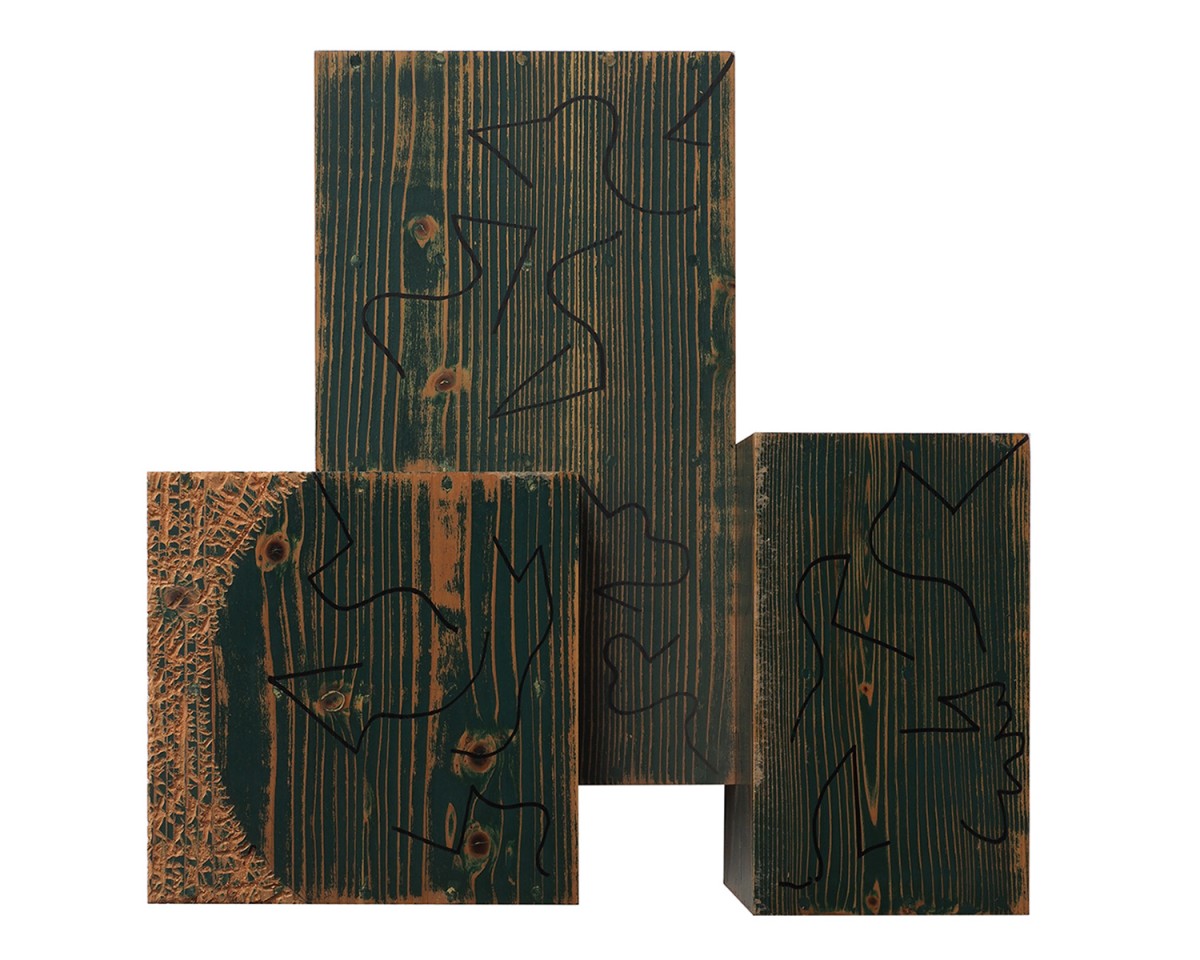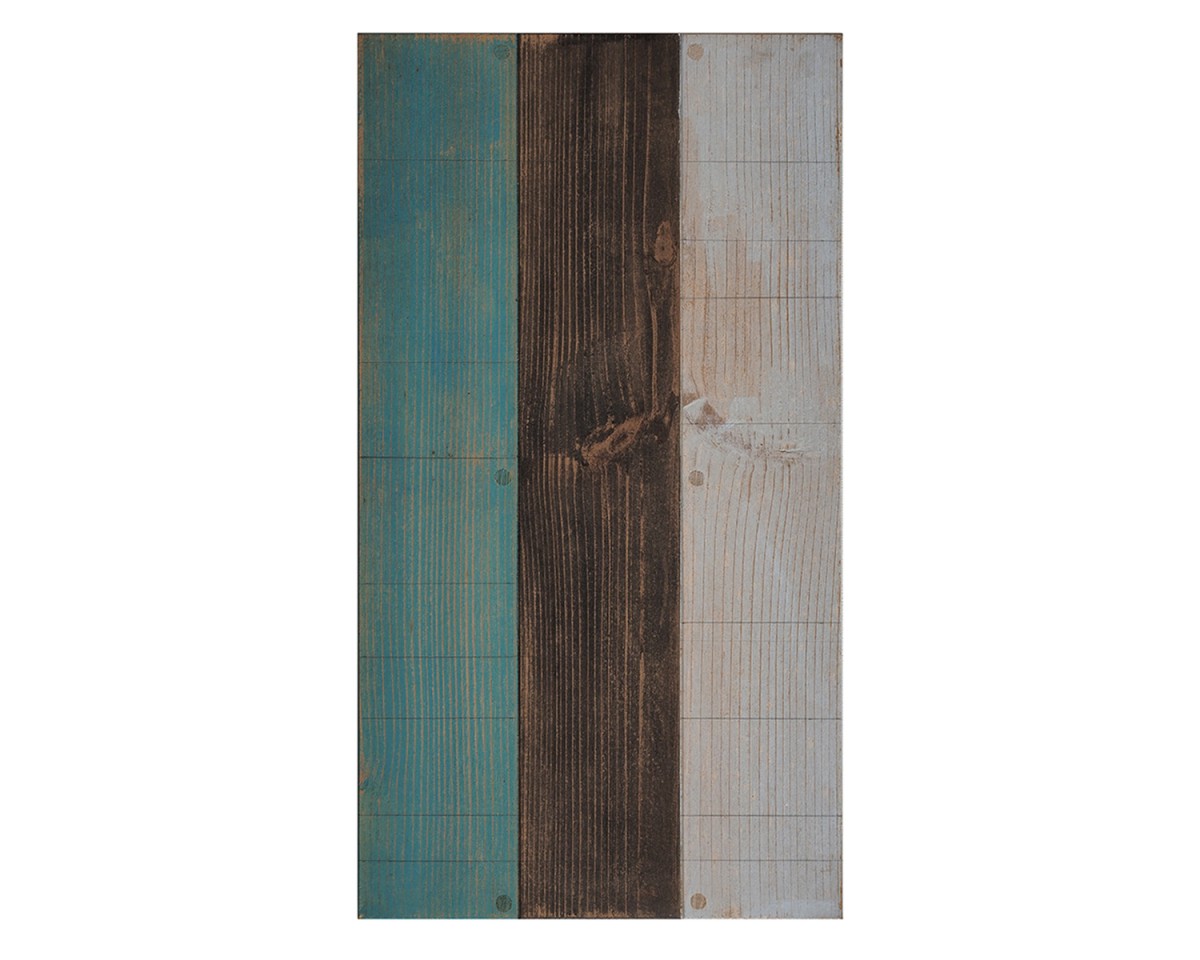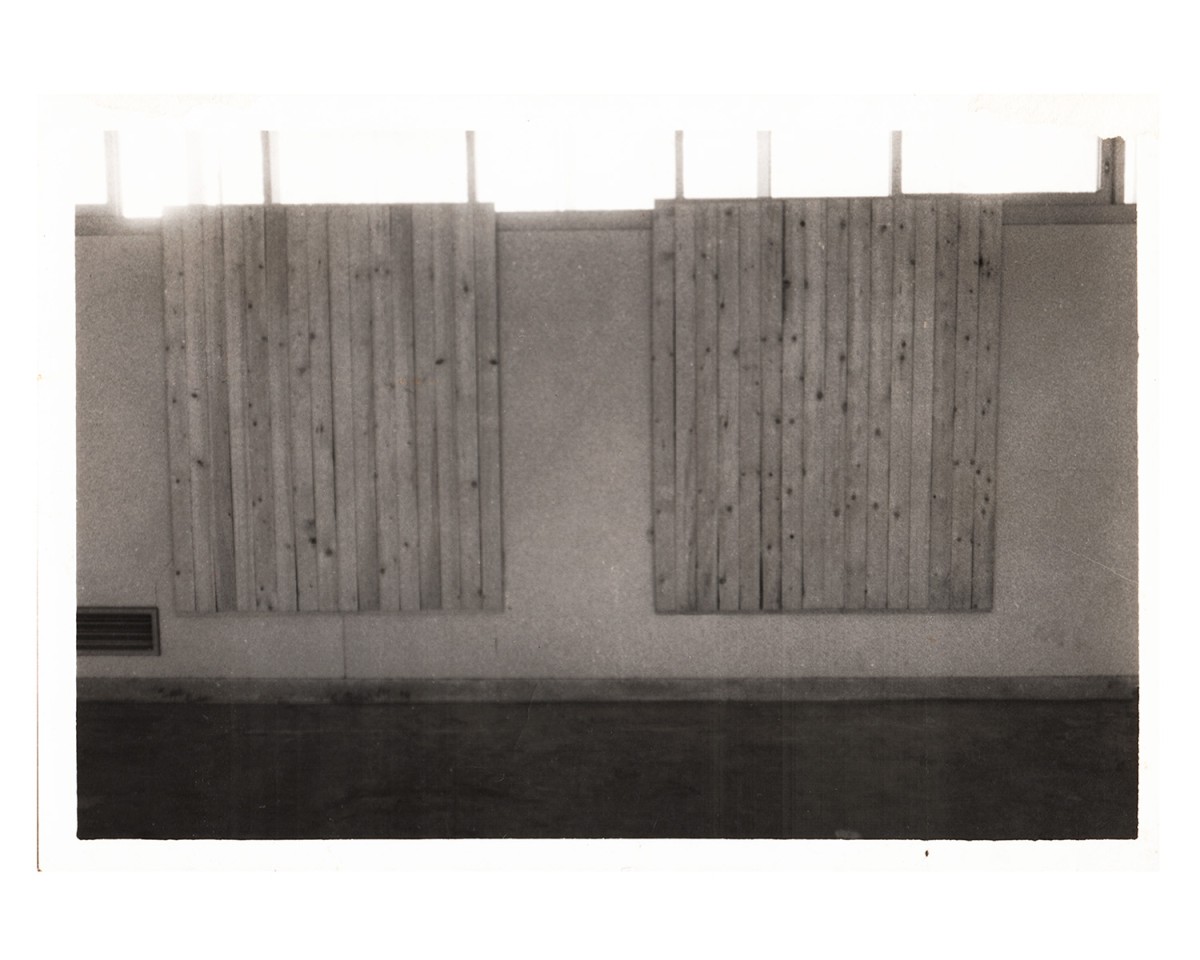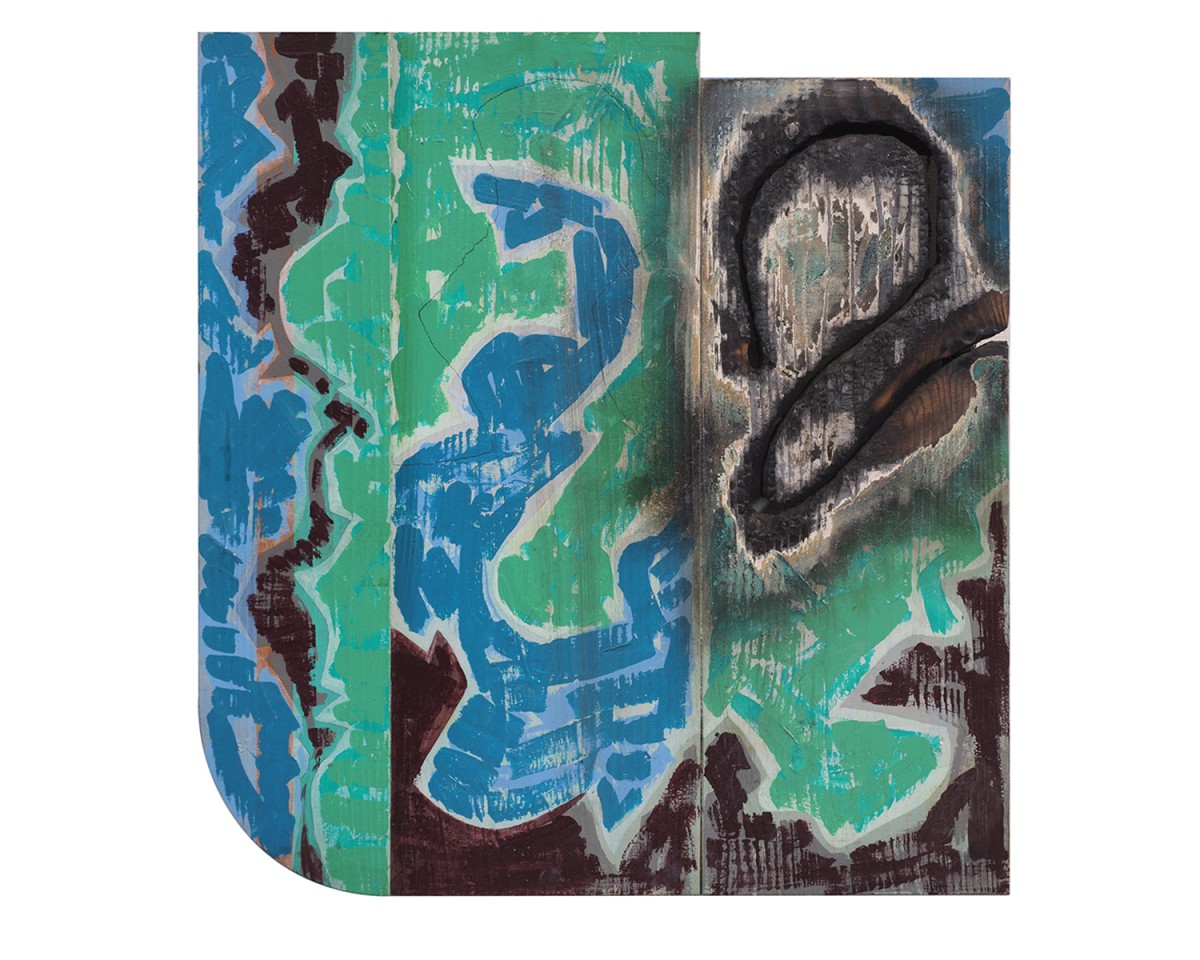
Hikosaka Naoyoshi, 3 Woodbox Art, 1992, acrylic on wood, 72.5 x 73.0 x 23.8 cm
Photo: Kimio Itozaki
Hikosaka Naoyoshi
PWP: Practice by Wood Painting
Saturday, October 14 – Saturday, November 25, 2023Extended until December 9
Hours: Tuesday-Saturday 12:00-19:00 (Closed on Mon, Sun, Public holidays)
Opening Reception: Saturday, October 14, 16:00-19:00
Talk by Tomii Reiko (art historian) : Saturday, November 4, 16:00-17:00 (in Japanese language only)
Installation View
Press Release
Download Press release (日本語)
Download Press release (English)
MISA SHIN GALLERY is pleased to present PWP Practice by Wood Paintings, an exhibition of work by Hikosaka Naoyoshi, from October 14 to November 25December 9, 2023.
Hikosaka is known for his performance art, Floor Event (1970), in which, completely nude, he coated the tatami mats in his room at home with latex, extending to the deck outside the room, and recorded the action in photographs. As an artist he has been in the forefront of Japanese conceptualism since the 1970s, questioning the very basis of the institution of art.
In 1969, as a key member of Bikyōtō (short for Artists Joint-Struggle Committee), which he formed with Hori Kosai and others, Hikosaka critiqued the institution of art. Bikyōtō languished in the aftermath of the collapse of the student movement. While staging Floor Event and its variations from 1970 to 1975, he embarked on a new pursuit under the concept of practice. Referencing Aristoteles, Hikosaka’s theory of practice begins with poiesis and praxis, and leans to a chain of recognition and practice grounded in Mao Zedong’s theory of practice. The final stage began in 1977, with practice and theorization embodied in his works in the Practice by Wood Painting (PWP) series.
As the title suggests, the supports for Hikosaka’s PWP—or Wood Painting—works are wood instead of canvas. However, rather than flat wood panels, the supports comprise pieces of wood of different thicknesses, lengths, and widths, presenting uneven surfaces that are covered with filmy layers of acrylic paint. These works represent the pursuit of a non-painterly method that does not use the flat surface of a canvas, instead exploring the potential of the deconstructed painting, a medium that he had once rejected through his action of applying latex to the floor. Despite his earlier rejection of the medium of painting through Floor Event, in the PWP series Hikosaka embarked on experimentation in “post-painting painting”, pursuing the painterly potential of the deconstructed medium.

Hikosaka Naoyoshi, Minimal Art, 1992
Acrylic on wood, 29 x 53.1 x 9.2 cm
Photo: Kimio Itozaki
Going back to the latter half of the 1960s when Hikosaka was a student at Tama Art University, he was struck by the dematerialization of modern art, which was undergoing rapid transformation worldwide. In June 1969, in a group exhibition on the barricaded Tama Art University campus before the founding of Bikyōtō, he used transparent vinyl sheeting stretched on wooden frames instead of canvas, exhibiting works in which the wall was visible through the wooden frame, or in which a wooden panel had been inserted at the back of the frame to conceal the wall, and a work in which vinyl sheeting was dropped onto the floor, leaving the wooden frame on the wall. These early works, which could be considered deconstructions of the medium of painting, raised questions about the self-evidence of painting as an autonomous object. The subsequent Floor Event series involved covering the floor of his home—the most self-evident plane—with a membrane of latex. In Wood Paintings, where the canvas is already absent—replaced by a wooden support—the wood is covered by a film of paint derived and developed from the latex membrane.

Hikosaka Naoyoshi, Untitled (wood wall), 1969
While Hikosaka deconstructs painting, he also furthers the concept of practice, taking up the challenge of reconstructing painting as post-painting painting. This development parallels the shift in the global art movements, which returned to painting after the departure from conventional artistic concepts in the 1960s. However, Hikosaka’s Wood Paintings were by no means an easy return to painting; he earnestly took on the lesson of post-painting, maintained his unrelenting attention to self-evidence in art, and highlighted structures and premises rendered invisible in modernism.
The exhibition will feature twelve Wood Paintings from the 1980s to the 1990s, recently discovered in the artist’s studio. With minimalist form and tones, diverse coatings of transparent paints on supports of different shapes, and abstract images featuring fractal shapes, this unseen group of works adds a fresh fascination to Hikosaka’s Wood Paintings.
Art historian Dr. Tomii Reiko will give a talk during the exhibition period, on November 4.

Hikosaka Naoyoshi, Pencil and Burner (The Real), 1992
Pencil and acrylic on burned wood, 59.5 x 63.5 x 8 cm
Photo: Kimio Itozaki
彦坂尚嘉 Hikosaka Naoyoshi
Born in Tokyo in 1946. Hikosaka was one of the leading artists in the movement against the institutional framework of art in the 1970s, playing a significant role in conceptual art in Japan. Entered Tama Art University, Tokyo in 1967, founded Bikyōtō (Artists Joint-Struggle Committee) together with his fellow students including Kosai Hori in 1969. Major exhibitions include “Global Conceptualism: Points of Origin, 1950s-1980s” at the Queens Museum of Art (New York, 1999) and three other venues in the USA, “CENTURY CITY” at Tate Modern (London, 2001), “Art, Anti-Art, Non-Art: Experimentations in the Public Sphere in Postwar Japan, 1950-1970” at the Getty Center, Research Institute Exhibition Gallery (Los Angeles, 2007), “Aichi Triennale” at Aichi Prefectural Museum of Art (Aichi, 2013), “Re:play 1972/2015 Restaging “ at the National Museum of Modern Art Tokyo (Tokyo, 2015).









